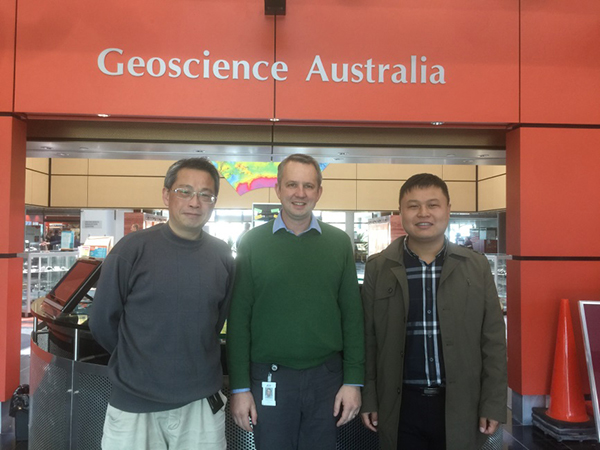Under the support of the CAGS3 exchange program, Mr Xin Ma from China Geological Survey visited Geoscience Australia in September and October, 2018. During the CAGS scientific research exchange, Mr Ma and Dr Liuqi Wang worked together on the simulation fitting study of the field-scale CO2 enhanced saline water recovery (CO2-EWR) test in East Junggar basin in Xinjiang.
Mr Ma’s research is based on the CO2-EWR experiments conducted in the Cainan oilfield, using the data collected to undertake simulation fitting analysis. After collecting the well testing, well logging and their interpretations data, Mr Ma built a 3D static geological model for the Jurassic Xishanyao Formation reservoir in East Junggar basin in Xinjiang. Using the results from the 3D heterogeneous geologic model, a simulation fitting research of the field-scale CO2-EWR test was conducted.
The results from the study completely agreed with the comprehensive results of the injection test. The high-precision coupling model was able to correct the geological model, invert the injection process, and predict changes of the CO2 plume in the reservoir.
During Mr Ma’s stay at GA, he participated in a number of scientific activities. He regularly attended GA seminars, joined a tour of the mineral and fossil collection at GA, and came along to the filming of CO2 for a public education series by GA and Questacon. In October, he attended the GHGT-14, visited the CO2 laboratory at Melbourne University and the Otway CCS demonstration project.
Ma’s exchange not only improved the research capacity of CO2-EWR for the Center for Hydrogeology and Environmental Geology Survey, but also provided technical examples for potential CO2-EWR projects in Xinjiang, a region facing carbon emission and water shortage issues. The cooperation further strengthened the collaboration between China Geological Survey and Geoscience Australia.
